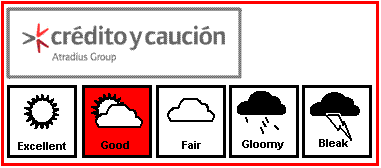| How has the energy sector performed so far in 2010? The US energy sector is in a state of transition and faces an uncertain regulatory environment. The recent oil spills in the Gulf of Mexico led to a drilling moratorium, causing many oil and gas companies to either sell - or at least re-evaluate - their drilling operations in the Gulf. This will also lead to more stringent safety requirements and regulatory monitoring, though it may be a while before all the changes are agreed and implemented. Natural gas drilling activity remains robust, though prices remain low because of the abundant supply. The US has more than doubled its reserves over the last 5 years due to new drilling techniques. The focus on reducing carbon emissions should be a benefit to natural gas producers, as natural gas is the cleanest burning fossil fuel. 
What is the current trend in payment terms, payment defaults and insolvencies? From a payment standpoint, most of the energy industry operates under standard terms. There is very little tolerance for late payments because of the critical nature of what is often being supplied. Also, in view of the large amounts typically involved, vendor credit departments will typically address any perceived payment issues expeditiously. Crédito y Caución saw a small rise in insolvencies when oil prices collapsed in 2008, but generally insolvency rates have been low since then, and Crédito y Caución expects them to remain so for the foreseeable future. What is Crédito y Caucións short-term outlook for the energy sector? More stringent safety requirements could prove to be an opportunity for those companies that make equipment and provide services to oil companies, as spending will need to increase to bring existing operations up to standard with those requirements. The recent elections and subsequent change in control of Congress makes the passage of a cap and trade bill very unlikely, which will benefit coal producers. The current administration still heavily favours renewable sources of energy such as wind and solar, but there are substantial costs associated with upgrading the power grid to accommodate these new sources. We will continue to see growth in wind and solar energy, though probably at a slower rate in the coming years. The Environmental Protection Agency [EPA] will play an increasingly important role in the direction of the energy sector, though this is being challenged by almost every manufacturing and economic association. Beginning in 2011, the EPA will regulate greenhouse gas emissions from stationary sources, which is essentially a way of imposing cap and trade. The EPA also recently ruled that gasoline with a 15% ethanol blend [E85] could be used in cars with a model year of 2007 or newer. This should increase slightly the demand for ethanol. Overall, Crédito y Caución expects to see a continued focus on clean energy in all its forms, although traditional fossil fuels will continue to play a big role for the foreseeable future. What is the Crédito y Caución approach to the sector? Our underwriting approach is positive, as Crédito y Caución views the sector as a whole as favourable. However, the various subsectors are influenced by vastly different factors so we take a more specialized view at a subsector level. | 